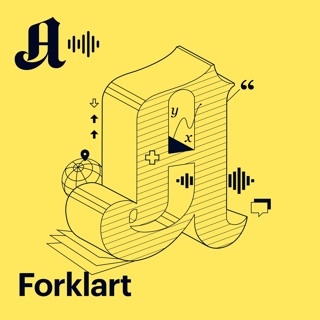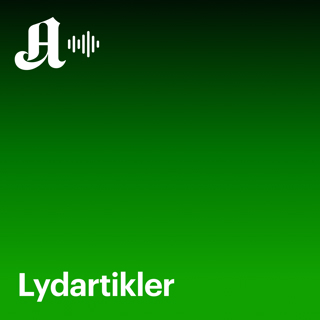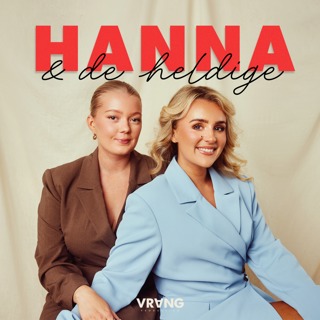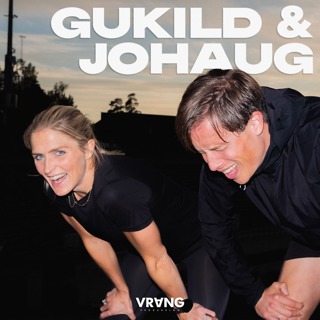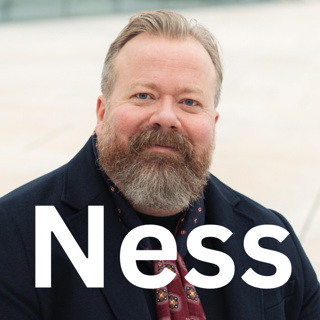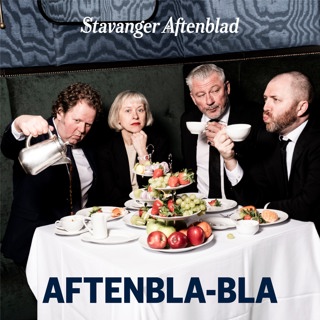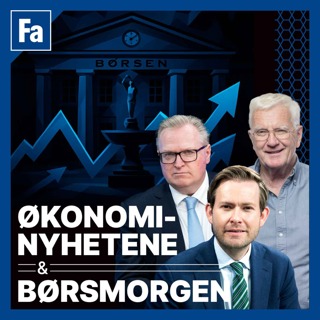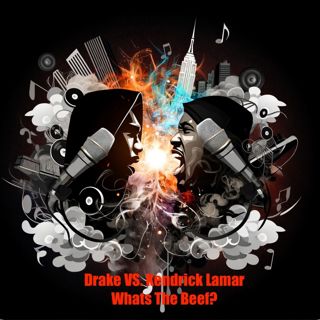
Kendrick Lamar vs. Drake: The Captivating Rivalry Shaping Hip-Hop
The world of hip-hop has been rife with lyrical battles and personal feuds, with one of the more understated yet persistent ones being between Kendrick Lamar and Drake. Both artists, supremely talented in their right, have subtly jabbed at each other in various songs over the years. While never escalating to the volatile levels seen in some hip-hop disagreements, their rivalry has been a topic of interest among fans and critics alike.Kendrick Lamar, hailing from Compton, California, has always been known for his deep lyrical content, narrative prowess, and dense rapping style. His rise to fame was marked by his critically acclaimed albums such as "good kid, m.A.A.d city" and "To Pimp a Butterfly." Lamar has been recognized for his complex lyrics that often address serious themes such as racial inequality, violence, and personal struggle.Drake, on the other hand, emerged from Toronto, Canada, and quickly became one of the most influential figures in modern hip-hop and R&B. Known for his melodious style and emotional openness, Drake has produced an array of chart-topping albums like "Take Care" and "Nothing Was the Same." His songs often explore themes of fame, relationships, and personal introspection.The origins of tension between Kendrick Lamar and Drake can be traced back to a few key moments and tracks where they seemed to indirectly address each other. It began escalating after Kendrick's verse on Big Sean's 2013 track "Control," where he named several rappers, including Drake, as competitors he aimed to surpass. Following this, both artists released tracks that appeared to contain veiled references criticizing the other. For instance, Drake's "The Language" is speculated by fans to be a response to Kendrick's aggressive call-out.Despite the competitive undertones, the feud between Lamar and Drake has mostly been one of mutual respect and professional rivalry rather than personal animosity. Such rivalries are common in hip-hop and are often seen as a way to push the genre forward, challenging artists to outdo not only each other but also themselves.Interestingly, the discussion around their feud was revisited when Benzino, a rapper and media executive notoriously known for his own feuds, particularly with Eminem, expressed a desire to see Lamar and Drake bury the hatchet. Benzino's comments about resolving beefs come from his own experiences and transformations, noting the importance and impact of reconciliation in the hip-hop community.Beefs in hip-hop, while they can sometimes spiral into negative territories, often stir the pot of creativity and result in some of the most memorable tracks and challenging verses, allowing artists to showcase their best work. The sportive, albeit sharp, exchanges between Kendrick Lamar and Drake have contributed to their legacies as titans in the music industry, continually inspiring audiences with their words and beats. Whether they will ever truly resolve their differences remains to be seen, but the conversation it sparks is undeniably captivating.This content was created in partnership and with the help of Artificial Intelligence AI
12 Okt 20243min

"Navigating Hip-Hop's Rivalry Landscape: Kendrick, Drake, and J. Cole's Neutral Stance"
In the world of hip-hop, feuds and rivalries are as much a part of the culture as the beats and rhymes. Among the notable tiffs that have colored the rap landscape, the rumored riff between Kendrick Lamar and Drake stands out. This so-called feud has stirred considerable discussion and debate among fans and critics alike. However, one prominent figure, J. Cole, has managed to keep a neutral, if not detached, stance amidst the speculated tensions.Kendrick Lamar and Drake are two of the most influential artists in modern hip-hop, each having ascended to the top of the genre with distinct styles and massive followings. Kendrick, known for his deep lyrical complexity and strong ties to Compton’s legacy, offers a stark contrast to Drake's blend of introspective hooks and commercial appeal. The origins of their alleged feud seem to trace back to subtle jabs and veiled references in their lyrics, which fans and the media have scrutinized heavily.The first notable spark was Kendrick Lamar's verse on Big Sean’s 2013 track “Control,” where he called out several rappers, including Drake, declaring himself the "King of New York" and staking his claim as one of the best in the game. This verse set the hip-hop community ablaze, with many interpreting it as a direct challenge to his peers.Drake’s response to Kendrick’s claims has been more subdued but perceptible to those paying close attention. In tracks like “The Language,” he is believed to have thrown subtle digs at Kendrick, remarking on the irrelevance of such claims against his commercial success. Furthermore, Drake's comments in interviews, although avoiding direct confrontation, displayed a clear dismissal of Kendrick's call-out, emphasizing his own achievements and the numbers that backed them up.Amidst this landscape, J. Cole’s position is particularly interesting. Known for his thoughtful lyricism and often introspective content, Cole has friendships with both Kendrick and Drake. Despite the subtle brewing tension between his two contemporaries, Cole has never explicitly picked a side. Instead, he's focused on his own career and occasionally collaborated with both artists.With Kendrick and Drake both continuing to top charts and influence global music trends, it’s clear that any competitive tension hasn’t hindered their respective successes. For J. Cole, staying out of the fray seems to reflect a broader approach of unity and focus on artistry over conflict in rap. His neutral stance could be viewed not as indifference, but as a mature avoidance of conflict, fostering a climate where creative energies are better spent in studios rather than on diss tracks.In conclusion, while the rap game often thrives on competition and conflict, the Kendrick Lamar versus Drake narrative, with J. Cole’s disengagement, underscores a complex tapestry of rivalry, respect, and the personal choices of artists navigating their paths in the charged atmosphere of hip-hop stardom.This content was created in partnership and with the help of Artificial Intelligence AI
10 Okt 20243min

Rap Titans Clash: Kendrick Lamar vs. Drake in Explosive New Documentary
The feud between Kendrick Lamar and Drake, two titans of the hip-hop industry, has been a subject of intense interest and speculation over the years. This complex relationship has now become the focal point of a new documentary titled "Public Enemies: Kendrick vs. Drake."Kendrick Lamar and Drake, both immensely talented and influential, have had careers that occasionally intersect in competitive ways, often fueled by the intense nature of hip-hop culture, which traditionally celebrates lyrical prowess and often involves direct or indirect challenges among artists. Their rivalry has served as a source of endless discussion for fans and critics alike, interpreting lyrics and public statements to deduce the current state of their relationship.The origins of the Kendrick-Drake tension can be traced back several years. Some point to Kendrick's verse on Big Sean's 2013 track "Control," where he called out many rappers, including Drake, declaring his intention to lyrically outdo them. This verse set the stage for a subtle back-and-forth in the years that followed.Drake has occasionally addressed the competitive nature between him and Kendrick in his music and interviews, often praising Kendrick's ability while also subtly asserting his own status in the hip-hop hierarchy. Their competition, while seemingly contentious, has often appeared to stay within the boundaries of professional rivalry and mutual respect."Public Enemies: Kendrick vs. Drake" aims to dissect this dynamic, promising insights from music critics, industry insiders, and possibly the artists themselves. The documentary will likely explore not just the public moments of this rivalry but also the broader impact both artists have had on modern music and culture. It will examine how their careers have been shaped by this ongoing interaction and competition, offering viewers a deeper understanding of what drives both Kendrick Lamar and Drake as artists and competitors in the high-stakes world of music entertainment. Exploring such a rivalry in documentary form adds a layer of depth to the understanding of both figures not just as musicians but as key cultural influencers of the 21st century, making "Public Enemies: Kendrick vs. Drake" a fascinating study of personality, power, and artistry in contemporary hip-hop.This content was created in partnership and with the help of Artificial Intelligence AI
8 Okt 20242min

Kendrick Lamar and Drake's Epic Hip-Hop Rivalry: Fueling Innovation and Shaping Modern Music
The feud between Kendrick Lamar and Drake is one of the most talked-about rivalries in the contemporary hip-hop scene. While at first glance, it may appear as a typical clash between two top artists vying for supremacy in the music industry, the roots and dynamics of this feud are more complex, intertwining personal ambitions, artistic differences, and industry pressures. Kendrick Lamar and Drake initially had a cordial relationship, evident from their collaborations, including Kendrick's appearance on Drake's 2011 album "Take Care." However, the relationship between the two began to sour as both artists rose to prominence and their paths to hip-hop supremacy diverged. The seeds of their feud were arguably planted with Kendrick Lamar's verse on Big Sean's 2013 track "Control," where he called out several rappers, including Drake, declaring his intention to lyrically "murder" them to make a name for himself in the music industry. Drake responded indirectly to Kendrick’s competitive call-outs in various tracks and interviews, highlighting a growing tension between their views on hip-hop and competition. Drake is known for a style that blends singing and rapping, with a focus on personal and emotional themes, while Kendrick Lamar is celebrated for his complex lyricism and social commentary. This stylistic difference has also fueled their rivalry, with fans and critics often debating whose approach better advances the genre.Despite the personal digs and occasional lyrical jabs, such as Kendrick's verses believed to target Drake in tracks like "The Heart Part 4" and "King Kunta," the feud has remained largely musical and hasn't escalated into a more serious personal conflict. Interestingly, the competition has arguably pushed both artists to excel. Drake has set numerous streaming records and has a string of chart-topping releases, while Kendrick has earned critical acclaim and several Grammy Awards, cementing both as influential figures in modern hip-hop.As both artists continue to evolve, the hip-hop community watches keenly, not just for signs of continued rivalry but also for how their paths influence the genre’s growth and culture. While their feud may never fully resolve, it stands as a testament to the competitive spirit that often drives artistic innovation.This content was created in partnership and with the help of Artificial Intelligence AI
6 Okt 20242min

Clash of the Titans: Drake vs. Kendrick Lamar – The Epic 2024 Rap Wars
In the realm of hip-hop, few rivalries have captured public attention as intensely as the feud between Drake and Kendrick Lamar, which has come to be emblematic of the 2024 Rap Wars. This conflict not only underscores their competitive spirit but also highlights their contrasting styles and approaches to music and celebrity.Drake, hailing from Toronto, Canada, has established himself as a powerhouse in the music industry with his blend of singing and rapping, creating a more accessible, melody-driven form of hip-hop that appeals to a wide audience. His lyrics often explore themes of fame, relationships, and personal struggles, making his music both introspective and appealing to a broad demographic.On the other hand, Kendrick Lamar, from Compton, California, is known for his complex lyrical narratives and social commentary, often delving into deep political and cultural issues. His albums, such as "Good Kid, M.A.A.D City" and "To Pimp a Butterfly," are heralded for their conceptual depth and have earned him critical acclaim and a devoted following.The feud between Drake and Kendrick Lamar reportedly began with subliminal jabs in their music and interviews, where each artist appeared to critique the other's approach to hip-hop and artistry. As these exchanges became more direct, fans and the media alike began to pay close attention, analyzing lyrics and social media posts for signs of escalation.This rivalry reached a boiling point in 2024, captivating fans and fueling endless debates and discussions in online forums, social media, and even academic circles, where the nature of their feud is dissected for its cultural and musical implications. It not only reflects personal tensions but also broader disputes in the hip-hop community about authenticity, commercialism, and the evolution of the genre.The Drake and Kendrick Lamar feud has not merely been a series of personal attacks but a conversation about the future direction of hip-hop as an art form. Both artists, at the top of their game, use their music as a battleground for showcasing their prowess and defending their personal visions for what rap music should represent.As the 2024 Rap Wars continue, the impact of this feud is likely to influence emerging artists and the industry at large, demonstrating the power of rap as a medium for personal expression and cultural commentary. This represents a pivotal moment in hip-hop history, illustrating how personal rivalries can shape the music and culture of an era.This content was created in partnership and with the help of Artificial Intelligence AI
5 Okt 20242min

Kendrick Lamar's Diss Track Ties Billboard Hot Rap Chart Record, Showcasing Lyrical Dominance in Rap Feud
In a striking display of lyrical warfare and chart dominance, Kendrick Lamar's highly-discussed diss track aimed at Drake has made significant waves in the music industry. According to Genius, this track has now tied the record for the longest-running No. 1 song on the Billboard Hot Rap Chart, marking a significant milestone in both Kendrick Lamar's career and the chronicles of rap feuds.The feud between Lamar and Drake, which has been brewing for several years, stems from subtle jabs and veiled references in their music, escalating to more overt call-outs that have captivated fans and critics alike. This particular diss track by Lamar is regarded not just as a direct confrontation in their ongoing rivalry but also as a masterpiece of rap storytelling and lyrical craft.Kendrick Lamar, known for his profound lyrical prowess and critical acclaim across the music world, utilizes this track to assert his dominance in the rap game, challenging Drake's position. The song’s reach and influence are evidenced not only by its sustained presence at the top of the charts but also by its impact on social media and digital platforms, sparking discussions and debates among fans.Drake, a formidable artist in his own right, known for his versatility and chart-topping hits, has responded in various tracks that subtly and sometimes openly address Lamar's challenges. This back-and-forth has added layers to their music, providing a deeper context for listeners to explore.This record-setting achievement for Lamar's diss track underscores the power of rap as a medium for personal expression and competitiveness. It highlights how such feuds can transcend personal boundaries to resonate with a broader audience, influencing perceptions and conversations in the culture at large.As this rivalry continues to unfold, it offers a fascinating glimpse into the dynamics of musical competition and evolution, reflecting broader themes of success, respect, and supremacy within the hip-hop community. Whether this will lead to further musical confrontations between Kendrick Lamar and Drake or perhaps a reconciliation remains a key point of intrigue for their fans and the music industry.This content was created in partnership and with the help of Artificial Intelligence AI
3 Okt 20242min

The Epic Clash of Hip-Hop Titans: Exploring the Rivalry Between Drake and Kendrick Lamar
In the landscape of hip-hop, feuds and lyrical battles are not just entertainment but also a means of artistic expression and public interest. The feud between Drake and Kendrick Lamar, two of the genre’s heavyweights, serves as a vivid display of their competitive spirit and has significant cultural and commercial implications.Kendrick Lamar and Drake are prominent figures in modern hip-hop, each with a distinct style and fanbase. Drake, hailing from Canada, has dominated the charts with his versatile rap and R&B blend, while California native Kendrick Lamar is celebrated for his lyrical depth and conceptual albums. Their rivalry came to light through various tracks where they seemed to target each other with barbed lyrics. For instance, Kendrick’s verse on Big Sean’s “Control” in 2013 called out several rappers, including Drake, which generated widespread attention. Drake responded through subtleties in tracks like “The Language” from his album "Nothing Was the Same", which many interpreted as a dig at Lamar’s aggressive call-out.Despite the apparent tension, both artists have remarkably maintained their focus on their music careers, with each release being critically and commercially successful. This ongoing "diss" aspect of their relationship fuels public and media intrigue, adding layers to their musical personas and keeping fans on edge for potential responses.Drake, in particular, despite the competitive undercurrents, has managed to break several records. For instance, he holds the record for the most entries on the Billboard Hot 100. This achievement underscores his ability to rise above controversies and maintain a consistent output that resonates with a broad audience. Kendrick, although trailing slightly in terms of chart records, has not let this rivalry define his career. His albums, like "To Pimp a Butterfly" and "DAMN.", are praised for their thematic complexity and depth, influencing many with their sociopolitical commentary and introspective nature.The feud, while highlighting the competitive side of the music industry, also emphasizes the skill and artistry of both rappers, who have managed to stay culturally relevant and influential. In doing this, they contribute richly to the dialogue around modern music, identity, and artistic freedom within hip-hop.This content was created in partnership and with the help of Artificial Intelligence AI
1 Okt 20242min

The Unspoken Rivalry: Decoding the Drake-Kendrick Lamar Hip Hop Feud
In the world of hip hop, few things garner as much attention as a feud between top artists. The alleged rift between Drake and Kendrick Lamar, two titans of the genre, has been a topic of speculation and discussion among fans and media alike. Despite various reports and interpretations of their interactions over the years, the true nature and extent of their relationship remain complex.Drake, hailing from Toronto, Canada, and Kendrick Lamar, from Compton, USA, have both carved indelible marks on the music industry with their distinctive styles and profound lyrical content. Drake is known for his versatile rap style and emotional openness, blending singing and rapping while traversing themes of fame, relationships, and personal struggles. Kendrick, on the other hand, is celebrated for his powerful narrative storytelling, dense lyricism, and deep engagement with social and political themes.Speculations about a feud began to circulate following Kendrick Lamar's verse on Big Sean's 2013 track "Control," where he name-dropped several artists, including Drake, challenging them and claiming his dominance in the rap scene. This was seen by many as a direct competitive call-out, fostering a spirit of rivalry among mentioned artists.Drake's responses have been more subtle and less direct. Over the years, he has dropped various lines in his songs and made statements in interviews that could be interpreted as digs at Kendrick or general commentary on the competitive nature of rap. However, Drake has typically downplayed any serious conflict, suggesting in interviews that while he is competitive by nature, he does not harbor personal animosities.The rumored beef has also brought up discussions on the different paths and philosophies in hip hop. Kendrick's approach is often viewed as artistry-focused, aiming to push the boundaries of the genre, while Drake is sometimes seen as blurring lines between commercial appeal and artistic integrity. Despite the ongoing rumors of a feud, both artists have continued to excel in their careers. Kendrick Lamar received widespread critical acclaim for his albums, notably "To Pimp a Butterfly" and "DAMN.," while Drake has dominated charts with releases like "Scorpion" and "Certified Lover Boy." Their supposed rivalry has not stopped them from achieving individual successes and contributing significantly to the evolution of hip hop.In essence, whether any animosity exists as personal or is merely a manifestation of the competitive spirit inherent in hip hop culture remains a topic of debate. What is clear is that both Drake and Kendrick Lamar have thrived in their respective paths, continually influencing the music industry and the broader cultural landscape.This content was created in partnership and with the help of Artificial Intelligence AI
29 Sep 20242min






